|
 |
Jakob Mertens
|
|
Jakob Merten (August 11, 1809 - February 22, 1872) was a German Catholic theologian who was born in Wittlich.
He studied theology in Trier, where in 1833 he received his ordination. Subsequently he became a chaplain in Trier, where he worked closely with Franz Peter Knoodt (1811-1889). From 1843 to 1868 he was a professor of philosophy at the Episcopal Seminary in Trier.
Initially a prominent follower of Anton Genther's philosophy, Merten eventually abandoned Gentherianism as his career progressed. He was author of an essay on Gentherian philosophy titled Hauptfragen der Metaphysik in Verbindung mit der Speculation (Primary Questions of Metaphysics in Association with Speculation) (1840). Other noted works by Merten include:
Grundriss der Metaphysik, (Outline of Metaphysics); 1848
Der selige Frings und sein Freund als Antigentherianer; 1852
Bemerkungen zur Metaphysik von Balmes, (Remarks on the Metaphysics of Balmes); 1859
|
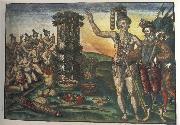 |
Jacques Le Moyne de Morgues
|
|
French painter, illustrator and explorer.
c.1533 -1588
French painter, illustrator and explorer, also active in Florida and London. In April 1564 he sailed with Ren? de Laudonni?re as artist of the Huguenot expedition to Florida. In September 1565 the Spaniards overran the colony, but he escaped and returned to France. By c. 1580 he had settled in Blackfriars, London, 'for religion' and received letters of denization on 12 May 1581. He later came into contact with Sir Walter Ralegh and his colonizing circle and with John White, the artist of the first English colony of Virginia, with whom he exchanged ideas and perhaps collaborated. Ralegh commissioned him to illustrate the Florida enterprise, and Le Moyne produced an account Brevis narratio eorum quae in Florida |
 |
Jacobus Mancadan
|
|
(c. 1602, Minnertsga - 4 October 1680, Tjerkgaast) was a Dutch Golden Age painter mostly known for his pastoral landscapes.
|
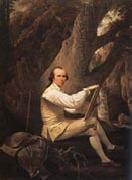 |
Jacob More
|
|
1740-93
Scottish painter, active in Italy. The son of an Edinburgh merchant, he was first apprenticed to a goldsmith and then, from 1766, to the Norie family of house-painters. In the 1760s he produced numerous sketches of the Scottish Lowlands (examples Edinburgh, N.G.), and in 1769 he designed and executed stage sets at the Theatre Royal, Edinburgh, for the first productions after the legalizing of the theatre in Scotland. More's Edinburgh period culminated in a series of oil paintings of the Falls of the River Clyde, three of which are in public collections: Corra Linn (Edinburgh, N.G.), Stonebyres Linn (London, Tate) and Bonnington Linn (Cambridge, Fitzwilliam). These paintings are regarded as the first serious artistic interpretations of the Scottish landscape, depictions by previous artists having been essentially topographical in character. More took a set of three of them to the Society of Artists Exhibition in London in 1771, at which he gained widespread recognition and the personal encouragement of Sir Joshua Reynolds. |
 |
Jacob Maris
|
|
(August 25, 1837, The Hague - August 7, 1899, Karlsbad) was a Dutch painter, who with his brothers Willem and Matthijs belonged to what has come to be known as the Hague School of painters.
Maris studied at the Antwerp Academy, and subsequently in Hubertus van Hove's studio during a stay in Paris from 1865 till 1871. He returned to Holland when the Franco-Prussian War broke out, and died there in August 1899. Though he painted, especially in early life, domestic scenes and interiors invested with deeply sympathetic feeling, it is as a landscape painter that Maris excelled. He was the painter of bridges and windmills, of old quays, massive towers, and level banks; even more was he the painter of water, and misty skies, and chasing clouds. In all his works, whether in water or oil color, and in his etchings, the subject is always subordinate to the effect. His art is suggestive rather than decorative, and his force does not seem to depend on any preconceived method, such as a synthetical treatment of form or gradations of tone. And yet, though his means appear so simple, the artist's mind seems to communicate with the spectator's by directness of pictorial instinct, and we have only to observe the admirable balance of composition and truthful perspective to understand the sure knowledge of his business that underlies such purely impressionist handling.
|
 |
Jacob Maentel
|
|
American physician and watercolor portraits painter,1763-1863 |
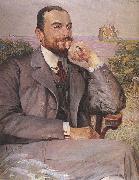 |
Jacek Malczewski
|
|
(15 July 1854 in Radom - 8 October 1929 in Krakow) was one of the most famous painters of Polish Symbolism. In his creativity he successfully joins the predominant style of his times with motifs of Polish martyrdom.
|
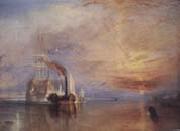 |
J.M.W.Turner
|
|
English Romantic Painter, 1775-1851, British land- and seascape artist. Born in London the son of a barber, Turner was precociously talented. He entered the RA Schools in 1789, had a drawing exhibited at the academy in 1790, and was elected a full academician in 1802. He became professor of perspective in 1807. A prolific artist of amazing range of subject and style, he began work in water-colours, quickly founding both a reputation and a fortune, which made him independent of changing public taste. His work was not appreciated by everyone, but his supporters included Thomas Lawrence, John Ruskin, and the earl of Egremont. He died in eccentric obscurity under a false name. |
 |
ignaz moscheles
|
|
Period: Romantic (1820-1869)
Country: Germany/Czech Rep.
Born: May 23, 1794 in Prague
Died: March 10, 1870 in Leipzig
Genres: Concerto, Keyboard Music |
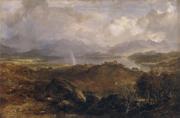 |
Horatio Mcculloch
|
|
Scottish Landscape painter ,1805-1867
Scottish painter. He was trained in the studio of the Glasgow landscape painter John Knox (1778-1845) and at first earned his living as a decorative painter. By the early 1830s McCulloch's exhibits with the Glasgow Dilettanti Society and with the Royal Scottish Academy had begun to attract buyers, notably the newly instituted Association for the Promotion of the Fine Arts in Scotland. Commissions from book and print publishers allowed him to concentrate on easel painting. On his election as full Academician of the Scottish Academy in 1838, McCulloch settled in Edinburgh and soon became a prominent figure in the artistic life of the capital and a prolific contributor to the Royal Scottish Academy exhibitions. At the same time contact with Glasgow was maintained: McCulloch's favourite sketching grounds were in the west, he exhibited regularly in the city and his most loyal patrons were wealthy Glasgow industrialists such as David Hutcheson (1799-1881), the steamship owner. He seldom exhibited outside Scotland and only once at the Royal Academy, London (1843), but he kept in touch with London artist-friends, John Phillip, David Roberts and John Wilson (1774-1855), through correspondence and visits. His own art collection was evidence of his admiration for 17th-century Dutch painters, for J. M. W. Turner and Richard Wilson. |
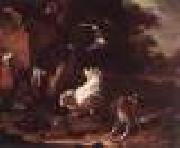 |
HONDECOETER, Melchior d
|
|
Dutch Baroque Era Painter, 1636-1695
Dutch animal painter. His grandfather, Gillis d'Hondecoeter (d. 1638) and his father, Gysbert d'Hondecoeter (1604?C1653), were landscape and animal painters. After four years at The Hague, where he painted The Menagerie of William III at Loo, Melchior settled in Amsterdam. He painted all forms of animal life, but is best known for his depiction of birds and fowl, in which he has few equals. Representative works, executed in a smooth, precise style, include the Dead Cock |
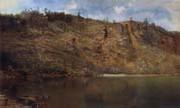 |
Homer Dodge Martin
|
|
American Barbizon School Tonalist Painter, 1836-1897, He was an American artist, particularly known for his landscapes. Martin was born at Albany, New York. A pupil for a short time of William Hart, his earlier work was closely aligned with the Hudson River School. He was elected as associate of the National Academy of Design, New York, in 1868, and a full academician in 1874. During a trip to Europe in 1876 he was captivated by the Barbizon school, and thereafter his painting style gradually became darker, moodier, and more loosely-brushed. From 1882 to 1886 he lived in France, spending much of the time in Normandy. |
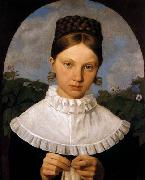 |
HESS, Heinrich Maria von
|
|
German painter b. 1798, Dsseldorf, d. 1863, Mnchen,German painter. After training (1813-17) under Peter von Langer (1756-1824) at the Akademie der bildenden Kenste in Munich, he painted religious subjects under the influence of Peter Cornelius. In 1821 he joined the Lukasbreder, and the circle around Crown Prince Ludwig I of Bavaria, in Rome. Apollo among the Muses (1824; Munich, Neue Pin.), painted for Maximilian I, shows Hess to be among the most gifted of the German artists working in Rome. The influence of Raphael, glowing but carefully harmonized colours, gliding figures and drapery animate this early masterpiece. Among other important works from this time are exquisitely detailed and colouristically sophisticated, intimate character portraits with early Renaissance settings, such as that of Marchesa Marianna Florenzi (1824; Munich, Neue Pin.), as well as fresh and lively Naturalist landscapes from the environs of Rome, for example Campagna Landscape near Ponte Nomentano (1821-6; Hamburg, Ksthalle). |
 |
Herri met de Bles
|
|
(also known as Herri de Dinant, Herry de Patinir, and Civetta) (c. 1510 - c. 1555 - 1560) was a Flemish Northern Renaissance and Mannerist landscape painter. He is also defined as a eeMosan landscape painter active during the second third of the 16thcentury (i.e., second generation of landscape painters).ee
Very little is positively known about the artist. He is believed to be a certain Herry de Patenir who joined Antwerp's Guild of St. Luke in 1535 as a painter and is also believed to be a court painter for the d'Este Dukes of Ferrara, where he ended his career known as "Il Civetta". He contributed, along with his possible-uncle Joachim Patinir, to a distinct style of Northern Renaissance landscape painting that combined small history or religious scenes into compositions defined by perspective and atmospheric effects. Also, along with a group of Antwerp-based followers of Hieronymus Bosch that included Jan Mandyn, Pieter Huys, and Jan Wellens de Cock, Met de Bles continued the tradition of fantastic imagery into northern Mannerism.
|
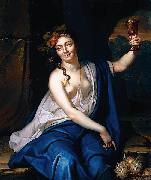 |
Herman van der Mijn
|
|
(1684, Amsterdam - 1741, London), was an 18th century painter from the Northern Netherlands.
According to Houbraken he introduced Jan van Nickelen to Jan Frans van Douven.
According to the RKD he learned to paint flowers from Ernst Stuven, and became a master of the Antwerp Guild of St. Luke in 1712, and the following year court painter to Johann Wilhelm, Elector Palatine. He took the family of Jan van Nickelen in tow to Dusseldorp, where they painted at court, and Van der Mijn taught Van Nickelen's daughter Jacoba Maria van Nickelen to paint flowers. She met the painters Rachel Ruysch and Willem Troost (whom Jacoba married) there. Van der Mijn returned to the Netherlands in 1717, but left on a trip via Brussels and Paris to London, where he stayed until 1737, when he took a trip to Leeuwarden
|
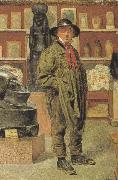 |
Henry stacy marks,R.A.
|
|
1829-1898
English painter. He studied with J. M. Leigh (1808-60) from 1847 and in January 1851 enrolled at the Royal Academy Schools. In 1852 Marks and P. H. Calderon spent five months studying in Paris under Fran?ois-Edouard Picot and at the Ecole des Beaux-Arts. The next year he made his d?but at the Royal Academy Summer Exhibition, where he exhibited annually until 1897. He was elected ARA in 1871 and RA in 1878. |
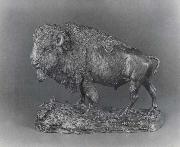 |
Henry Merwin Shrady
|
|
American Sculptor, 1871-1922,was the sculptor of the Ulysses S. Grant Memorial in Washington, D.C. Shrady was born in New York City. His father, George Shrady, was one of the physicians who attended former president Ulysses S. Grant during the struggle with throat cancer that led to his death on July 23, 1885. Shrady graduated from Columbia University in 1894 and spent one year thereafter at Columbia's law school. He left law school to join with his brother-in-law, Jay Gould (son of millionaire Edwin Gould, the financier), at the Continental Match Company. The company failed and Shrady contracted typhoid fever which diverted him forever from the business world. His recuperation left spare time to pursue a growing interest in art. Shrady's wife, Harrie Moore, submitted some of his paintings to an exhibition of the National Academy of Design without his knowledge and they sold quickly. He then began to teach himself sculpture using zoo animals and his pets as models. Shrady and architect William Casey Pearce won the competition to build the Ulysses S. Grant Memorial in 1902. In the twelve years Shrady spent executing the memorial, he studied biology at the American Museum of Natural History and dissected horses to gain a better understanding of animal anatomy. |
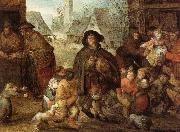 |
henry mayhew
|
|
English journalist and sociologist. He studied law but soon turned to journalism. In 1841 he founded the highly successful Punch. A vivid and voluminous writer, he is best known for London Labour and the London Poor (1851 C 62), an evocation of the sights and sounds of the working-class districts of London, which influenced Charles Dickens and other writers. He also wrote plays, farces, fairy tales, and novels, some in collaboration with his brother Augustus Septimus Mayhew |
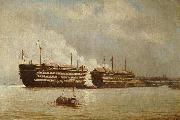 |
Henry J. Morgan
|
|
painted HMS 'Excellent' and HMS 'Illustrious' by Henry J. Morgan in 1860s |
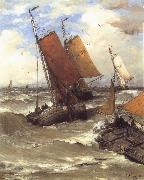 |
Hendrik Willem Mesdag
|
|
Hendrik Willem Mesdag was born on February 23, 1831 in Groningen. His father, a merchant and banker, was an amateur painter who saw to it that his two sons were also educated in the art of painting. He was a Dutch marine painter. He was born in Groningen, the son of the banker Klaas Mesdag and his wife Johanna Wilhelmina van Giffen. Mesdag was encouraged by his father, an amateur painter, to study art. He married Sina van Houten in 1856, and when they inherited a fortune from her father, Mesdag retired from banking to pursue a career as a painter. He studied in Brussels with Willem Roelofs and in 1868 moved to The Hague to paint the sea. In 1870 he exhibited at the Paris Salon and won the gold medal for The Breakers of the North Sea. Preparations for departureIn 1880 he received a commission from a Belgian company to paint a panorama giving a view over the village of Scheveningen on the North Sea coast near The Hague . |
 |
Hans von Marees
|
|
(24 December 1837 - 5 June 1887) was a German painter. He mainly painted country scenes in a realistic style.
Von Marees was born in Elberfeld, Germany. At age 16, he was sent to the Berlin Academy. In 1857, he moved to Munich.
In 1869, he visited France, the Netherlands and Spain. He served in the Franco-Prussian War (1870-71) and then lived in Berlin and Dresden for a while. In 1873, he decorated the library walls of the newly built Naples Zoological Institute in Italy. The next year, he moved to Florence.
He died in Rome at the age of 49 and is buried in the Protestant Cemetery there.
|
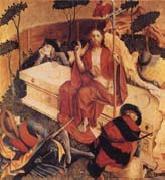 |
Hans Multscher
|
|
German Northern Renaissance Sculptor, ca.1400-1467
German sculptor. Multscher mentions his birthplace on the inscribed band, originally a predella, of the Karg altarpiece in Ulm Cathedral (1433) and on two wings of the so-called 'Wurzach Altar' (1437) at Reichenhofen in the Allgeu. The town archives of Leutkirch, written between 1405 and 1437, record that Multscher belonged to the 'Freien Leute auf Leutkircher Heide', a commune of free peasants who had been able to preserve their independence because they were the direct descendants of Kenigsfreie, who had always been free. Under a charter of Emperor Ludwig in 1337 |
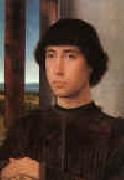 |
Hans Memling
|
|
Netherlandish Northern Renaissance Painter, ca.1435-1494
Born in Seligenstadt, near Frankfurt in the Middle Rhein region, it is believed that Memling served his apprenticeship at Mainz or Cologne, and later worked in the Netherlands under Rogier van der Weyden (c. 1455?C1460). He then went to Bruges around 1465.
There is an apocryphical story that he was a wounded at the Battle of Nancy, sheltered and cured by the Hospitallers at Bruges, and that to show his gratitude he refused payment for a picture he had painted for them. Memling did indeed paint for the Hospitallers, but he painted several pictures for them, in 1479 and 1480, and it is likely that he was known to his patrons of St John, prior to the Battle of Nancy.
Memling is connected with military operations only in a distant sense. His name appears on a list of subscribers to the loan which was raised by Maximilian I of Austria, to defend against hostilities towards France in 1480. In 1477, when he was incorrectly claimed to have been killed, he was under contract to create an altarpiece for the gild-chapel of the booksellers of Bruges. This altarpiece, under the name of the Seven Griefs of Mary, is now in the Gallery of Turin. It is one of the fine creations of his more mature period. It is not inferior in any way to those of 1479 in the hospital of St. John, which for their part are hardly less interesting as illustrative of the master's power than The Last Judgment which can be found since the 1470s in the St. Mary's Church, Gda??sk. Critical opinion has been unanimous in assigning this altarpiece to Memling. This affirms that Memling was a resident and a skilled artist at Bruges in 1473; for the Last Judgment was undoubtedly painted and sold to a merchant at Bruges, who shipped it there on board of a vessel bound to the Mediterranean, which was captured by Danzig privateer Paul Beneke in that very year. This purchase of his pictures by an agent of the Medici demonstrates that he had a considerable reputation. |
 |
Hans Makart
|
|
(May 28, 1840 - October 3, 1884) was a 19th century Austrian academic history painter, designer, and decorator; most well known for his influence on Gustav Klimt and other Austrian artists, but in his own era considered an important artist himself and was a celebrity figure in the high culture of Vienna, attended with almost cult-like adulation.
Makart was the son of a chamberlain at the Mirabell Palace, born in the former residence of the prince-archbishops of Salzburg. Initially, he received his training in painting at the Vienna Academy between 1850 and 1851 from Johann Fischbach. While in the Academy, German art was under the rule of a classicism, which was entirely intellectual and academice clear and precise drawing, sculpturesque modelling, and pictorial erudition were esteemed above all. Makart, who was a poor draughtsman, but who had a passionate and sensual love of color, was impatient to escape the routine of art school drawing. For his fortune, he was found by his instructors to be devoid of all talent and forced to leave the Vienna Academy.
He went to Munich, and after two years of independent study attracted the attention of Karl Theodor von Piloty, under whose guidance, between 1861 and 1865 he developed his painting style. During these years, Makart also travelled to London, Paris and Rome to further his studies. The first picture he painted under Piloty, Lavoisier in Prison, though it was considered timid and conventional, attracted attention by its sense of color.
In his next work, The Knight and the Water Nymphs, he first displayed the decorative qualities to which he afterwards sacrificed everything else in his work. His fame became established in the next year, with two works, Modern Amoretti and The Plague in Florence. His painting Romeo and Juliet was soon after bought by the Austrian emperor for the Vienna Museum, and Makart was invited to come to Vienna by the aristocracy.
The prince Von Hohenlohe provided Makart with an old foundry at the Gusshausstraße 25 to use as a studio. He gradually turned it into an impressive place full of sculptures, flowers, musical instruments, requisites and jewellery that he used to create classical settings for his portraits, mainly of women. Eventually his studio looked like a salon and became a social meeting point in Vienna. Cosima Wagner described it as a "wonder of decorative beauty, a sublime lumber-room". His luxurious studio served as a model for a great many upper middle-class living rooms.
The opulent, semi-public spaces of the Makart atelier were the scene of a recurring rendezvous between the artist and his public. The artist became the mediator between different levels of society: he created a socially ambiguous sphere in which nobility and bourgeoisie could encounter one another in mutual veneration of the master, and aestheticized the burgeoning self-awareness of the bourgeoisie by means of historical models drawn from the world of the aristocracy. In this way, an artist like Makart lived out the image that high society had created of him. Makart is considered by many as being the first art star, referred to by contemporaries an "artist prince" (Malerferst) in the tradition of Rubens.
Makart became the acknowledged leader of the artistic life of the Vienna, which in the 1870s passed through a period of feverish activity, the chief results of which are the sumptuously decorated public buildings of the Ringstraße. He not only practised painting, but was also an interior designer, costume designer, furniture designer, and decorator, and his work decorated most of the public spaces of the era. His work engendered the term "Makartstil", or "Makart style", which completely characterized the era.
In 1879, Makart had designed a pageant organised to celebrate the Silver Wedding Anniversary of the Imperial couple, emperor Franz Josef and his wife Elisabeth of Bavaria he designed, single-handed, the costumes, scenic setting, and triumphal cars. This became known as the "Makart-parade", and had given the people of Vienna the chance to dress up in historical costumes and be transported back into the past for a few hours. At the head of the parade was a float for artists, led by Makart on a white horse. His festivals became an institution in Vienna which lasted up until the 1960s. In the same year as the first parade he became a Professor at the Vienna Academy.
Makart's painting The Entry of Charles V into Antwerp caused some controversy, because Charles V was depicted arriving in a procession surrounded by nude virgins; the offense was the mistaken idea that the nudes had no place in the modern scene. In the United States, the painting fell under the proscription of Anthony Comstock, which secured Makart's fame there. The American public desired at once to see what Comstock was persecuting, so they could tell whether he was acting correctly or in error.
Salzburg's Makart Square, or Makartplatz, was named after the painter.
|
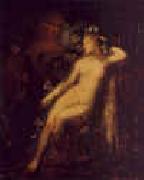 |
Gustave Moreau
|
|
French
1826-1898
Moreau's main focus was the illustration of biblical and mythological figures. As a painter of literary ideas rather than visual images, he appealed to the imaginations of some Symbolist writers and artists, who saw him as a precursor to their movement.
His father, Louis Jean Marie Moreau, was an architect, who recognized his talent. His mother was Adele Pauline des Moutiers. Moreau studied under François-Édouard Picot and became a friend of Th??odore Chass??riau, whose work strongly influenced his own. Moreau carried on a deeply personal 25-year relationship, possibly romantic, with Adelaide-Alexandrine Dureux, a woman whom he drew several times.[1] His first painting was a Piet?? which is now located in the cathedral at Angoul??me. He showed A Scene from the Song of Songs and The Death of Darius in the Salon of 1853. In 1853 he contributed Athenians with the Minotaur and Moses Putting Off his Sandals within Sight of the Promised Land to the Great Exhibition.
Oedipus and the Sphinx, one of his first symbolist paintings, was exhibited at the Salon of 1864. Over his lifetime, he produced over 8,000 paintings, watercolors and drawings, many of which are on display in Paris' Mus??e national Gustave Moreau at 14, rue de la Rochefoucauld (IXe arrondissement). The museum is in his former workshop, and was opened to the public in 1903. Andr?? Breton famously used to "haunt" the museum and regarded Moreau as a precursor to Surrealism.
He had become a professor at Paris' École des Beaux-Arts in 1891 and counted among his many students the fauvist painters, Henri Matisse and Georges Rouault.
Moreau is buried in Paris' Cimeti??re de Montmartre.
In Alan Moore's graphic novel, The League of Extraordinary Gentlemen, it is implied that he was a nephew of Doctor Moreau, and he based a few of his paintings on the Doctor's creations. |
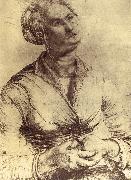 |
Grunewald, Matthias
|
|
German Northern Renaissance Painter, ca.1470-1528
.the traditional name of a painter whose real name is believed to have been Nithardt or Neithardt. He was active at Isenheim nr. Colmar c.1514 and in Frankfurt c.1526. Gr??newald's principal work, an elaborate altarpiece of many panels painted for the monastery at Isenheim (Isenheimer Altar), is now in the Colmar museum. |
 |
GIUSTO de Menabuoi
|
|
Italian painter, Florentine school (b. ca. 1320, Firenze, d. 1391,
Italian painter, Florentine school (b. ca. 1320, Firenze, d. 1391, was an Italian painter of the early Renaissance. He was born in Florence. In Lombardy he executed a fresco of the Last Judgement in the Abbey of Viboldone, Milan. He then moved to Padua where he completed frescos in the Church of the Eremitani, the Basilica of Saint Anthony of Padua and most notably, the Baptistery of the Duomo (1376). |
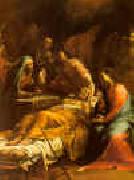 |
Giuseppe Maria Crespi
|
|
1665-1747
Italian
Giuseppe Maria Crespi Locations
1747). Painter, draughtsman and printmaker. His religious and mythological works are distinguished by a free brushstroke and a painterly manner. He also painted spirited genre scenes, which by their quality, content and quantity distinguish him as one of the first Italian painters of high standing to devote serious attention to the depiction of contemporary life. Such paintings as Woman Laundering (1700-05; St Petersburg, Hermitage) or Woman Washing Dishes (1720-25; Florence, Uffizi) offer straightforward glimpses of domestic chores in images that are startlingly novel for the period and look forward to the art of Jean-Simeon Chardin, Jean-Francois Millet and Honore Daumier |
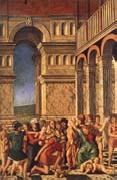 |
Girolamo Mocetto
|
|
Italian Painter, ca.1470-1531,Italian engraver, painter and designer of stained glass. He was born into a family of glass painters, and, although there is no documentary evidence that he worked outside Venice, his early paintings and engravings show the influence of Domenico Morone and of Mantegna and his circle, which would suggest that Mocetto's training may not have been exclusively Venetian. His artistic evolution is most clearly seen in a comparison of early works still close to Morone, such as a series of three engravings of the Battle between Israel and the Amalekites (see Hind, nos 719-20) or the painting of the Battle (Pavia, Pin. Malaspina), to works of a few years later, such as the two small paintings of the Massacre of the Innocents (London, N.G.; see fig.) and the engravings of Pagan Sacrifices (H 726-7), the Metamorphosis of Amymone (H 728) and the Calumny of Apelles (H. 727), all datable to c. 1500. In the later works, whole passages or motifs are copied or adapted from drawings and engravings by Mantegna. Mocetto may have had direct contact with the court of Mantua (the Metamorphosis of Amymone is an allegory of the city of Mantua); two engravings dating from the first years of the 16th century, St John the Baptist (H 724) and Judith with the Head of Holofernes (H 725), |
|

